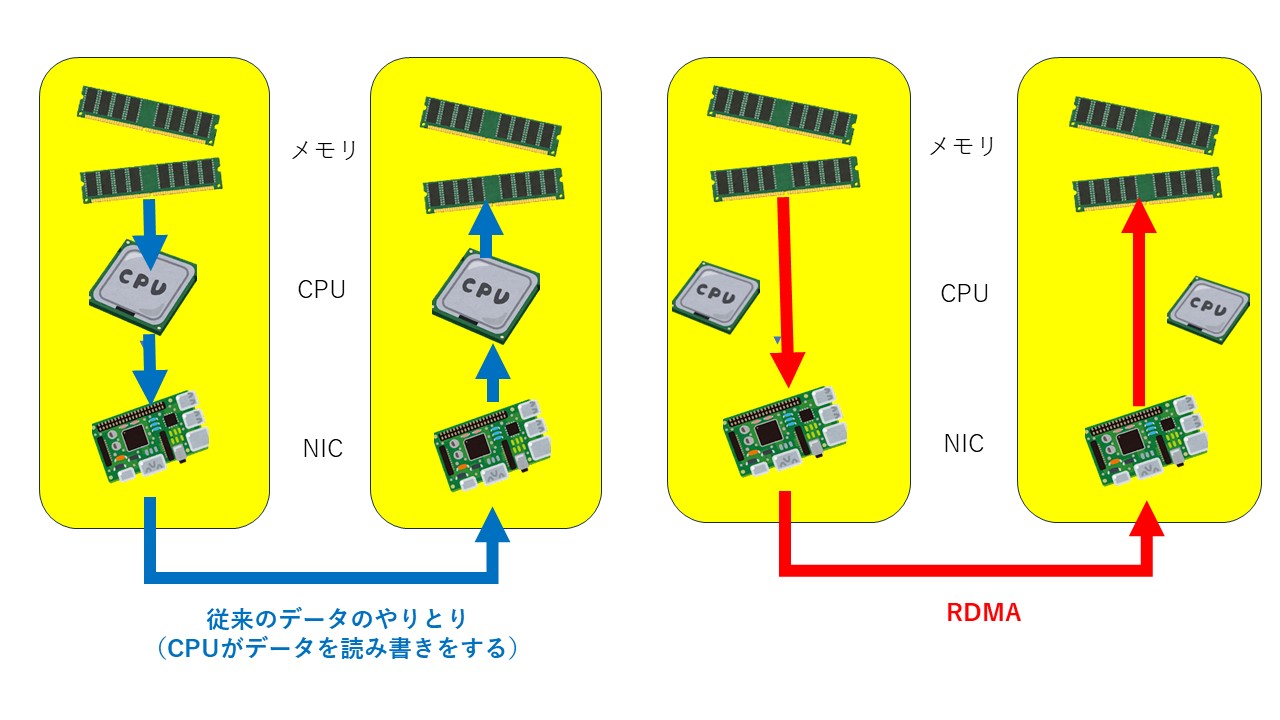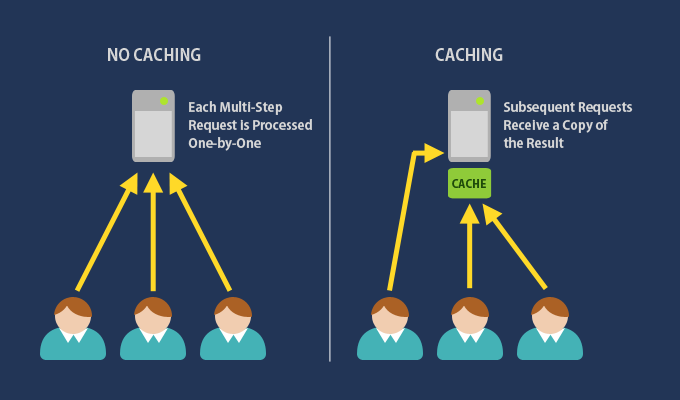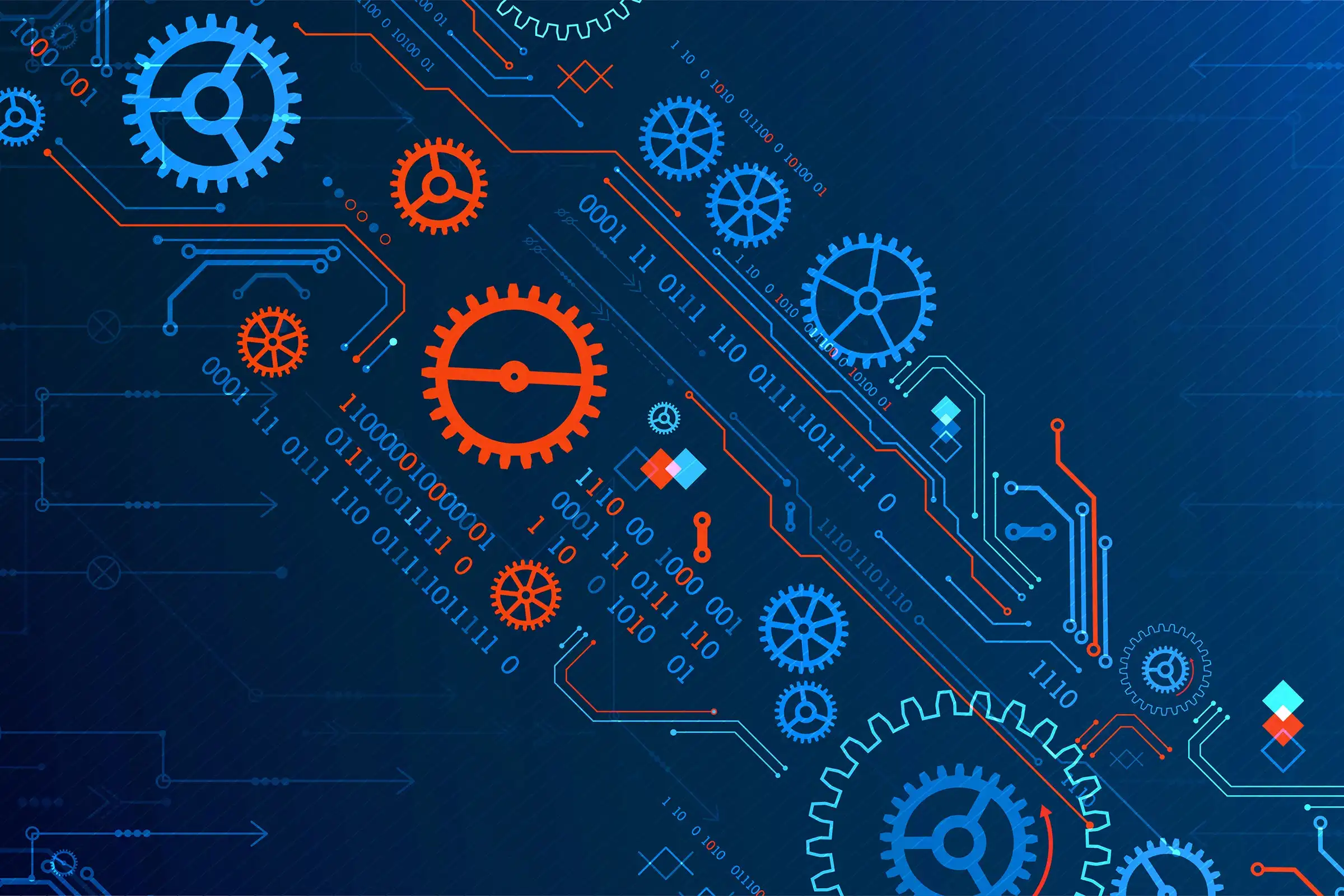
RDMA (Remote Direct Memory Access) is a technology that allows direct memory access from the memory of one computer to the memory of another without involving either computer’s operating system or CPU. RDMA enables high-throughput and low-latency networking, making it ideal for high-performance computing environments, data centers, and applications requiring rapid data transfer. Here’s how RDMA works and its benefits:
How RDMA Works:
- Direct Memory Access: RDMA allows one computer to read from or write to the memory of another computer directly, bypassing the need for the CPU to be involved in the data transfer process. This direct memory access minimizes data processing overhead, reducing latency and improving efficiency.
- Bypassing the Operating System: Traditional networking requires the operating system and CPU to manage the communication process, which can lead to bottlenecks, especially when moving large amounts of data. RDMA bypasses these layers, using dedicated network hardware that handles the data transfer directly, freeing up CPU resources for other tasks.
- Use of RDMA-Capable Network Adapters: RDMA-capable NICs (Network Interface Cards) are required to establish an RDMA connection. These adapters manage the data transfer autonomously, further enhancing the efficiency of data exchange.
- Transport Protocols: RDMA uses specialized transport protocols such as InfiniBand, RDMA over Converged Ethernet (RoCE), or iWARP to facilitate the direct data movement. These protocols are designed to enable high throughput, low latency, and reliable data communication across networks.
Benefits of RDMA for Computer Systems:
- Low Latency:
- RDMA significantly reduces latency by allowing data to move directly between memory locations without intervention from the CPU or operating system. This makes it highly suitable for applications where low response time is critical, such as financial trading platforms or real-time analytics.
- High Throughput:
- By eliminating the need for multiple data copies between memory and buffers, RDMA allows for higher data throughput. The CPU is not responsible for moving data between different stages, and the RDMA-capable network adapters can utilize high-speed networking technologies, leading to faster data transfers.
- Reduced CPU Load:
- Since the CPU is not involved in managing data transfers in RDMA, it is free to execute other tasks, which leads to better overall system performance. This is particularly beneficial in scenarios where computational workloads are intense and require maximum CPU power.
- Efficient Use of Resources:
- By bypassing the kernel and other networking layers, RDMA reduces overhead in terms of memory and I/O. This means fewer context switches and interrupts, leading to more efficient use of system resources.
- Scalability:
- RDMA supports horizontal scaling in distributed computing environments by allowing nodes to exchange data quickly without bogging down system resources. This is particularly important in cloud or data center environments where scalability is a crucial factor.
- Improved Application Performance:
- Many high-performance computing (HPC) applications, big data, and distributed databases benefit from RDMA due to faster data movement between nodes. Examples include machine learning models requiring rapid data exchange and distributed databases such as Cassandra or Hadoop clusters.
- Benefits in Storage Networks:
- RDMA is used in storage area networks (SANs), especially with technologies like NVMe over Fabrics (NVMe-oF), to speed up data access between storage devices and servers. RDMA improves the efficiency and performance of network storage by directly accessing memory without additional data copying.
Use Cases of RDMA:
- High-Performance Computing (HPC):
- RDMA is widely used in HPC environments where rapid data movement between nodes is essential for solving complex problems like scientific simulations, weather modeling, and large-scale financial computations.
- Data Centers and Cloud Computing:
- Data centers use RDMA for low-latency, high-throughput communication between servers. Major cloud service providers use RDMA to speed up distributed storage, virtual machines, and containers, making workloads more efficient.
- Database and Big Data Applications:
- RDMA is used in distributed database systems like Oracle RAC and Microsoft SQL Server to accelerate data exchange between nodes, leading to faster query processing and reduced response times.
- NVMe over Fabrics (NVMe-oF):
- NVMe-oF uses RDMA for storage communication to access high-speed SSD storage across a network with minimal latency. This technology benefits storage environments that require high IOPS (input/output operations per second) and low latency.
- AI and Machine Learning:
- RDMA helps in training machine learning models by providing faster communication between GPUs or servers. When handling large datasets, RDMA accelerates the transfer, reducing the training time required for complex models.
Limitations of RDMA:
- Complex Implementation:
- Setting up RDMA requires specialized hardware and network infrastructure that supports the RDMA protocol. Configuring RDMA can be more complex compared to traditional networking.
- Cost:
- RDMA-capable NICs and switches are more expensive compared to standard network equipment, which can lead to higher initial costs for implementation.
- Limited Compatibility:
- Not all devices or applications are compatible with RDMA. Legacy systems or software without RDMA support may require additional modifications, leading to challenges in integration.
Summary:
RDMA is a networking technology that provides low-latency and high-throughput data transfer by enabling direct memory access between different systems, bypassing the CPU and operating system. It improves performance by reducing the load on the CPU, allowing faster communication between nodes, and increasing system efficiency. RDMA is widely used in high-performance computing, data centers, distributed databases, and NVMe storage environments, offering significant advantages for applications requiring rapid data movement and real-time processing.







